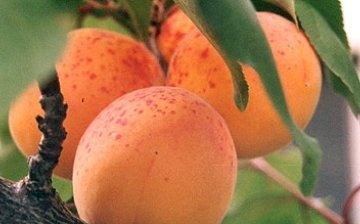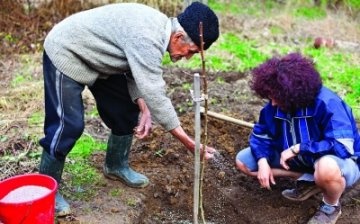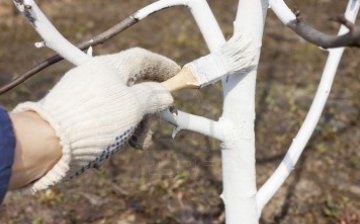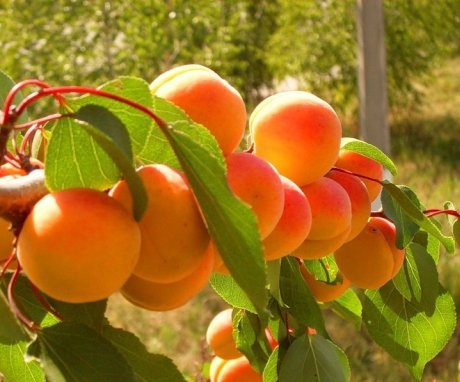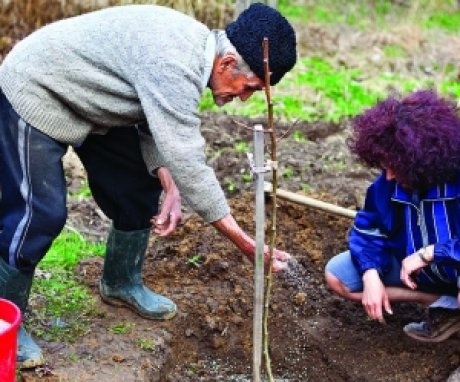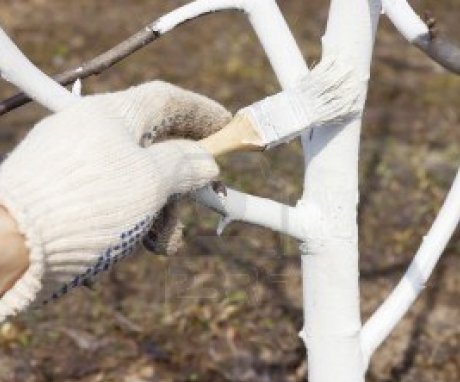Red-cheeked apricot: description, cultivation and care
Red-cheeked apricot is characterized not only by tasty and large fruits, but also by unpretentious care. It belongs to the canned variety, which can be consumed fresh, or can be preserved.
Content
Description of the variety
The origin of this plant is currently unknown. Apricot fruit ripen in the middle period. Apricot trees are large enough and are characterized by a round and thin crown.
The first harvest after planting a seedling should be expected already for 3-4 years of planting.
The fruits of the red-cheeked apricot in weight reach 50 grams. They are round or ovoid and are light orange in color. There is also a blush on the fruit, which is red in color. The pulp of the apricot is light orange in color. It is quite soft, juicy and tender. The apricot fruit tastes sweet with a characteristic sour taste. The apricot kernel is very easily separated from its pulp. This plant is absolutely not demanding on the soil.
The red-cheeked apricot is characterized by resistance to low temperatures and droughts.
Planting an apricot
Despite the whimsicalness of the red-cheeked apricot, he still loves light and warmth.
That is why it must be planted in a sunny place. You should not plant this plant in lowlands, which are characterized by a constant accumulation of cold air. This will negatively affect the growth and development of apricots. In the summer, this plant must receive a lot of heat. This will help him to easily endure wintering.
This tree is not demanding on the soil.
But it is better to plant it in reinforced soils, which are characterized by the presence of a small amount of lime. Red-cheeked apricot is able to tolerate drought very well, but excessive moisture negatively affects it. Also, do not allow salt to enter the ground. This will negatively affect the fertility of the tree.
To ensure the correct growth and development of the red-cheeked apricot, it is necessary to carry out its rational planting:
- Initially required dig a shallow hole.
- An apricot seedling is placed in it.
- In this case, the root collar of the plant should be slightly below ground level.
- It is necessary to fill up the hole first with earth from the upper layer, and then with earth from the lower layer.
- After filling the hole, it is necessary to compact the soil around the seedling with your feet.
- It is necessary to start compaction from the edges of the pit to the center, that is, to the plant.
- As a result of this action, a seal will form around the pit.
- After planting, the plant is watered with water (in the amount of 20-30 liters) and mulched with peat, manure or other organic substances.
If you plant 2-3 seedlings on the site, then this will significantly increase the yield of apricot.
Red-cheeked apricot care
It is necessary to mulch the apricot in the first two years after planting:
- This makes the roots of the tree look for water in the depths.
- Otherwise, the root system will remain on the surface of the earth, which will not have a beneficial effect on the growth and development of the tree.
- In winter, the top layer of the soil freezes, and the roots of the apricot will freeze along with it, which will lead to its death.
- Red-cheeked apricot requires abundant watering during the growth of its crown (May-June).
- Further watering the tree is not recommended. Otherwise, it can lead to overgrowth of shoots.
- In winter, they can freeze before they get stronger. Watering the red-cheeked apricot can only be done in case of very severe drought.
In early spring and late autumn, the tree trunk must be whitewashed with a solution of copper sulfate and lime.
A thorough inspection of the tree is carried out at the end of April - at the beginning of May. If, during the examination, wounds were found on the tree, then they must be covered with garden varnish. The crown of a red-cheeked apricot is able to form independently. therefore additional trimming of wood not recommended. You just need to remove the dried branches from the apricot.
Despite the fact that apricot is unpretentious in care, it is still susceptible to disease.
The most common ones are:
- Verticellosis wilting.
- Clasterosporium disease.
- Infectious desiccation.
- Brown spotting.
- Curliness of leaves.
- Moniliosis, etc.
The symptoms of these diseases are small brown spots on the fruits, the presence of a brown, sticky substance on the crown of the tree, ulcers on the buds and branches of apricot, etc. In order to save the tree in such cases, it is necessary to treat it with special preparations. The choice of the drug depends on the characteristics of the disease. It can act as Bordeaux liquid, copper-containing preparations, etc.
Apricot is a fairly unpretentious plant. But still, he needs to provide appropriate care in order to avoid diseases and pests. Proper care will ensure a high level of apricot yield.
More information can be found in the video.



